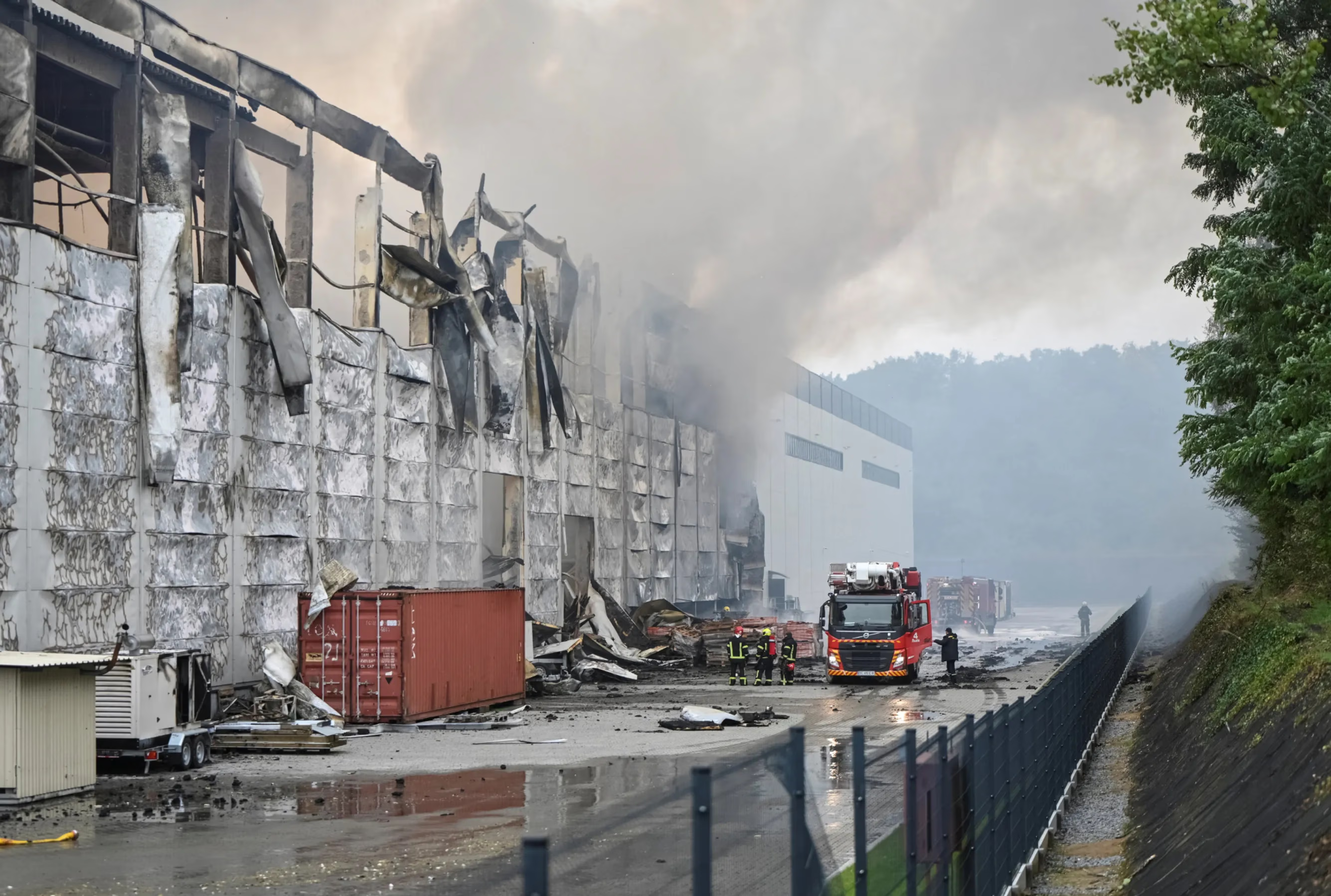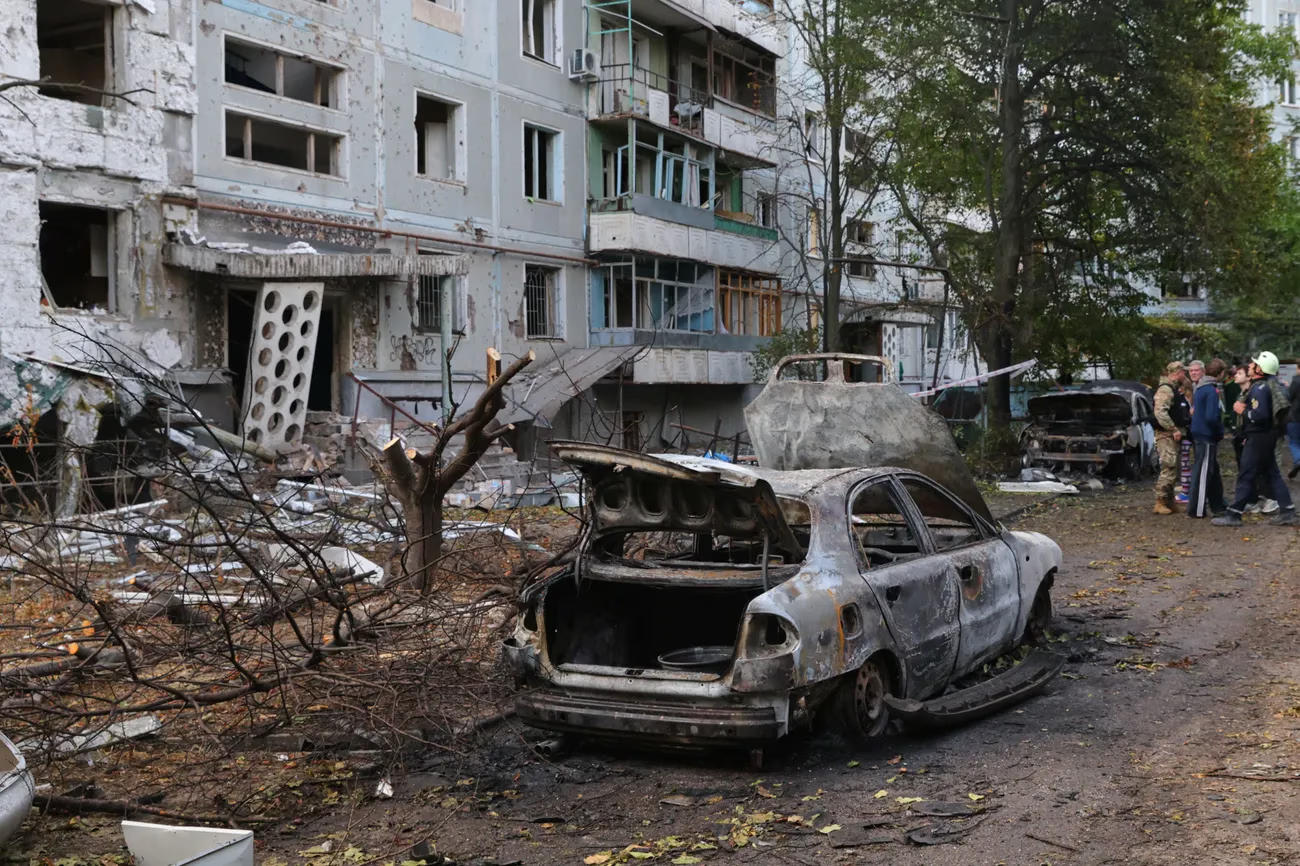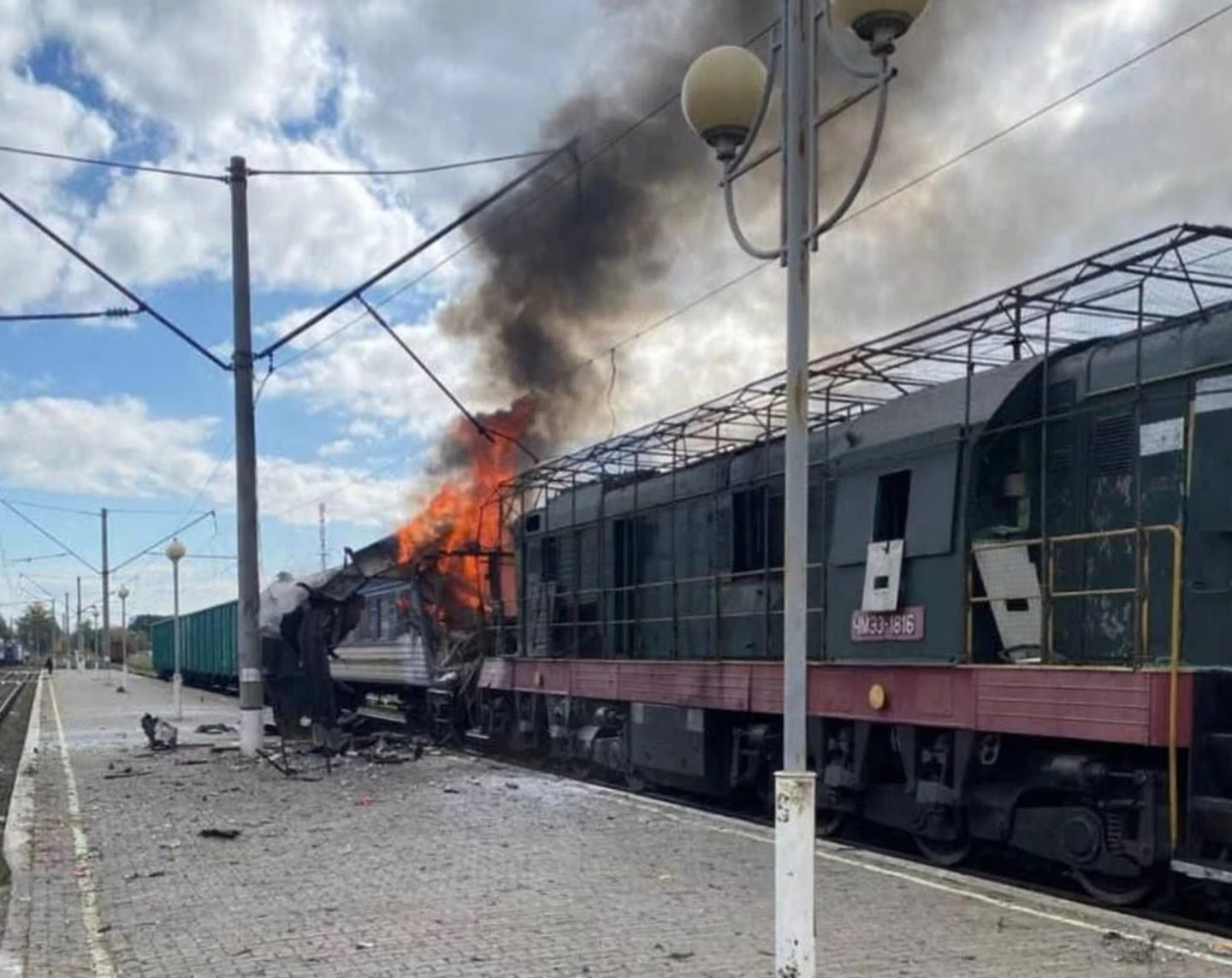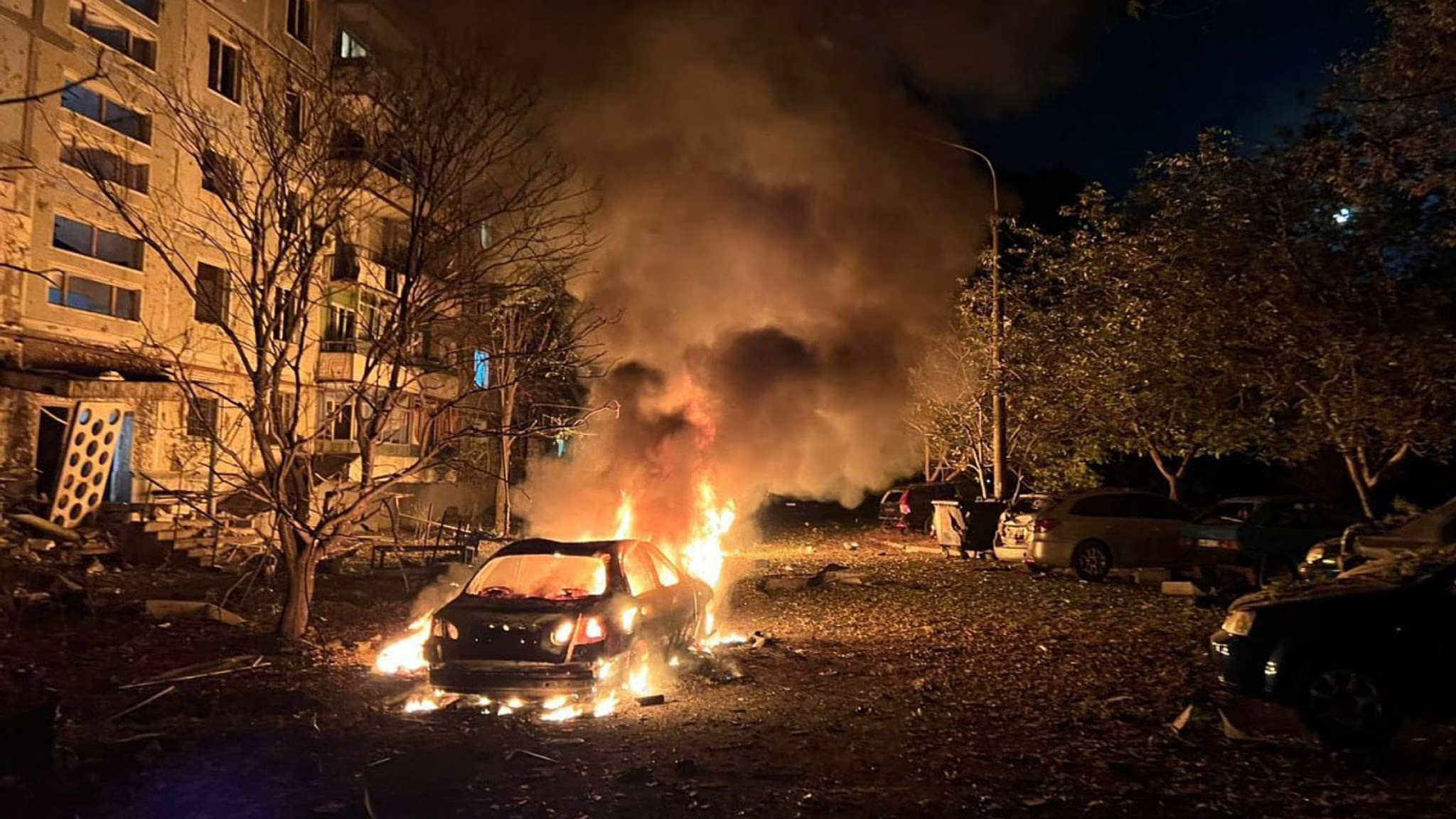Russia has once again unleashed its largest wave of strikes on Ukraine in recent months. During the night of October 5, dozens of missiles and hundreds of drones targeted the energy infrastructure across nine regions, leaving tens of thousands without power and killing at least five people. Moscow is resuming a war of attrition against Ukraine’s energy system—at a time when the country faces an acute shortage of air defense systems, and the few that remain appear to be increasingly outmaneuvered by Russian missiles.
Overnight on Sunday, October 5, Russia launched a massive strike on Ukraine, firing dozens of missiles and roughly five hundred attack drones. According to officials, the assaults damaged energy infrastructure across various parts of the country and killed at least five people, four of them in the Lviv region in western Ukraine.
The Russian military also struck Zaporizhzhia with drones and guided aerial bombs. A 69-year-old woman was killed and ten others were injured. Eight apartment buildings and seven private houses in the city were damaged, as well as one private house in the Zaporizhzhia district.

Aftermath of a Russian strike in Lviv.

A burned-out car and a damaged residential building following a Russian strike on Zaporizhzhia.
The combined strike hit nine regions, leaving hundreds of thousands of people without power. Moscow is intensifying its energy war against Ukraine ahead of the coldest and darkest months of the year. In recent days, Russian forces have repeatedly targeted energy and gas infrastructure, raising fears that the heating system could be crippled—and that, in turn, could trigger a new wave of refugees into the European Union.
Russia appears to be exploiting vulnerabilities in Ukraine’s patchwork air defense system, which still cannot fully shield the country from aerial attacks.
The nighttime assault followed another heavy day—on Saturday, October 4, Russia repeatedly shelled the northern city of Shostka in the Sumy region, striking the railway station twice, where a passenger train carrying civilians was stationed. An elderly man was killed, and thirty others, including three children, were wounded. The train was partially destroyed. The strikes also damaged the city’s power grid, causing electricity outages and prompting the mayor to urge residents to limit the use of gas appliances.

A train is engulfed in flames after a Russian drone strike on a railway station in Shostka, Sumy region. October 4, 2025.
Kyiv insists that the United States and Europe must not only supply new air defense systems but also impose additional sanctions to curb Russia’s war economy, which sustains weapons production. The American Patriot batteries remain the only systems capable of reliably intercepting Russian ballistic missiles that routinely strike residential buildings, businesses, and civilian infrastructure. Yet even they are not foolproof—in recent weeks, several attacks have pierced the defenses, partly because Russia has adapted its missiles to deceive interception systems.
Ukraine recently announced that Israel had delivered a single Patriot system—its first act of military assistance to Kyiv after years of requests. Several more systems from European partners are expected to arrive in the fall, but experts note that creating a full-fledged “air shield” would require dozens of such batteries.
For now, Ukrainian mobile air defense units, stationed on pickup trucks and rooftops, use machine guns to shoot down swarms of Russian drones that fly over the country almost daily. Moscow has also altered its tactics: drones are increasingly launched on ballistic trajectories, making them harder to intercept until they begin their dive toward targets—often in densely populated areas.
